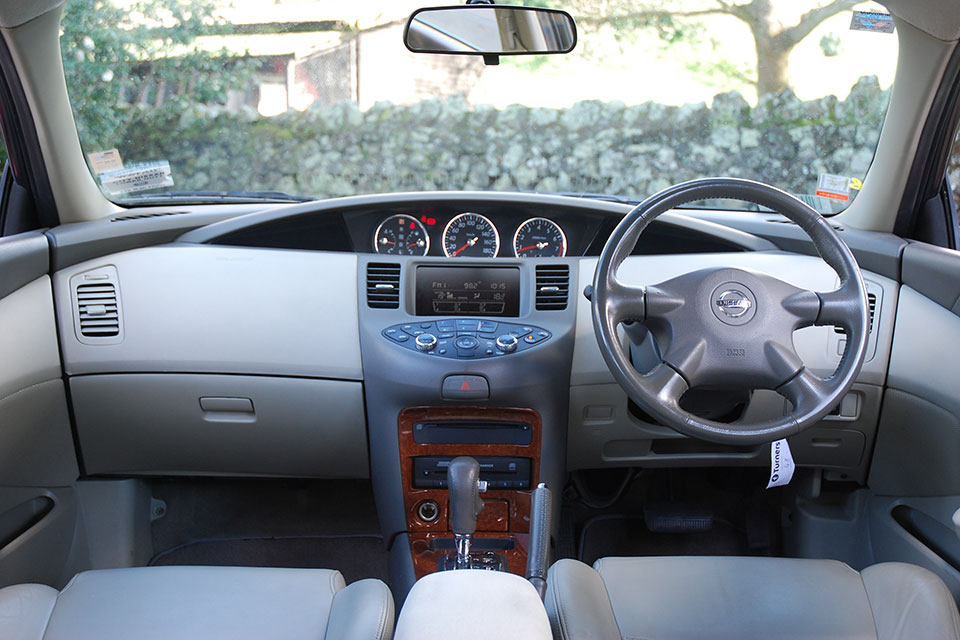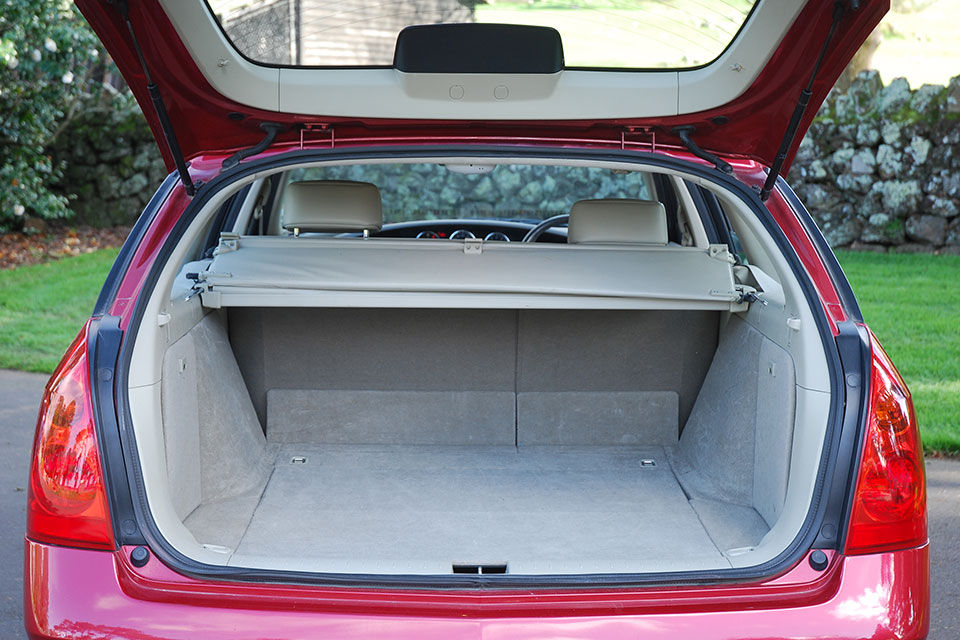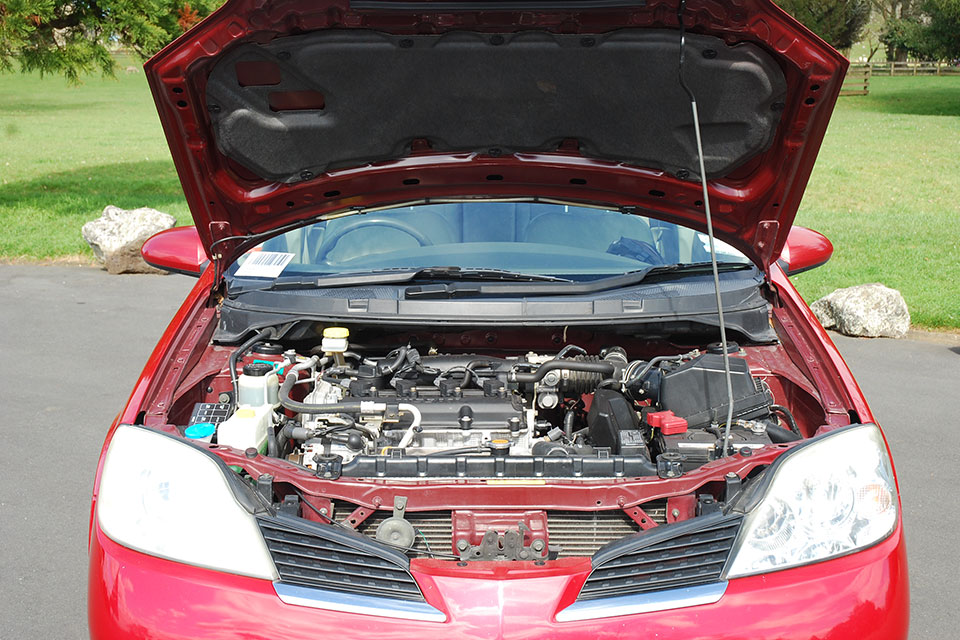Nissan Primera 2001-2008 used car review
The Nissan Primera is a spacious medium-size family car with a practical boot.

The Nissan Primera is a spacious medium-size family car with a practical boot. Its engine is small and lacks enough power for the car's size.
The new generation Nissan Primera was a significant departure from the previous generations when it was launched in 2001. Instead of a sports-style sedan, the new model was softer and more luxurious. It also changed from manual transmissions to CVT automatics. Sedan, liftback and station wagon versions were available, though the sedan was discontinued in the New Zealand market in 2006.
Inside and out
The Primera has a unique look with its solid, angular design. This creates a significant amount of interior space even if it does mean the car is a little odd to look at. The odd angle at the rear of the sedan version allowed Nissan to replace it in 2006 with a liftback with little difference in the way it looked.
The unconventional design continues inside. A large pod stretching across the middle of the dash houses the three large, clear dials. Their position is designed to allow you to scan the dials while taking your eyes off the road for as little time as possible.
Below this, the controls for the stereo and climate control are set on a platform below the LCD screen. We think this design makes it harder to find the controls while driving. The Primera has two CD players, the main one and below it a CD changer for a further six discs. The system is MP3 compatible.
The front seats are supportive although they feel a little small and larger drivers might find them less comfortable. The rear seat has plenty of legroom and headroom but it feels narrow and three adults might not find it comfortable.
Luggage space is excellent. Although the official 460-litre volume of the boot is low compared to other medium-size wagons, there is plenty of usable space and four large and two small cases can fit. The door is broad and low which makes it easy to load. The space also includes four tie-down points to secure loads. Split and fold the rear seat and the space expands to a massive 1,440 litres.
On the road
Three engines are available in the Primera: 1.8-litre, 2-litre, and 2.5-litre four cylinder petrol engines. Almost all cars seen in New Zealand are fitted with the 2-litre, including the New Zealand-new ones. This produces 103kW and 192Nm. A CVT automatic transmission, which cannot be shifted manually, is standard. A few rare imports use a five-speed manual. For such a big car, the Primera lacks power, especially obvious as the CVT requires the engine to rev high when climbing hills or to accelerate.
You will need to carefully plan overtaking moves when heavily loaded. The Primera might not have a lot of power but it does still feel nice to drive. The steering is light and responsive, and the tyres provide plenty of grip. The ride is also fairly good, although a rough road can catch it out and feel harsh. The brakes are very good as well. Road noise is low but the engine can be a little loud when it’s being pushed hard.
With its angled design, it is not easy to see the corners of the Primera and that makes it tricky to park. Nissan fixed this issue for later model buyers with the addition of reversing cameras standard in 2006. We recommend having one fitted in earlier cars. You can buy one to fit yourself from $50 or have a professional supply and fit one from $200.
Don’t expect to tow much with the Primera. The car is rated to tow a maximum of just 500kg - a small to medium-size garden trailer - regardless of whether the trailer has brakes or not.
Safety
No local safety ratings are listed for the Primera. The only rating we could find was a four-star Euro NCAP rating from 2002 for models with front, side and curtain airbags. The NCAP testing noted that there is adequate protection for both the driver and front passenger, with good performance in a side impact.
Japanese import and New Zealand-new vehicles sold before 2006 received driver and passenger airbags and antilock brakes. Side and passenger airbags, and electronic brake force distribution were added to New Zealand-new cars sold from 2006.
Our 2004 model Primera does not carry ISOFIX child seat mounts. The centre position of the rear seat has a lap-only style belt, which offers less protection than the full shoulder type. All cars received a full belt in the centre position from 2006.
Reliability
The Primera has an average reputation for reliability. There are some issues to look out for and their occurrence increases as the model ages. The 2-litre engine uses a timing chain which will not require regular replacement.
The CVT automatic transmission needs to be checked closely before purchase. If serviced correctly, it will run reliably. However, issues can arise if it isn’t and the incorrect transmission fluid is used. Look for a loss of drive or a shudder on take-off. Replacing the transmission with a hard-to-find used unit will cost around $2,000 and could be uneconomic on older cars.
Check carefully for any sign of moisture or creaminess in the engine oil, whether it’s on the dipstick or under the oil filler cap. These engines are simply not worth the cost of rebuilding – it’s best to scrap the car if a cheap second-hand engine cannot be found. Oil leaks can occur from the rocker cover and cam chain covers. That’s more of an annoyance than an issue and will cost a few hundred to repair.
The plastic header tanks on the radiators can get brittle with age, crack and lose coolant. Replacing the radiator will cost from $300.
Electric window regulators often fail and the master switch units on the driver’s door can wear out and lose their rocker motion. The cloth trim around the door grab handles often peels away from the backing cards, billowing out as the material loses any adhesive contact after years of heat and humidity.
That can cause a Warrant of Fitness failure. You can get kits to polish them back to clear lenses and professionals also offer the service.
Rust now appears to be a problem with older Primeras. Places to check carefully include the engine bay strut tower weld seams, inner guard seams, firewall and top inner guard to firewall plate. The cars are also prone to underbody rust around the back floor or boot pan area.
Cost of ownership
Nissan recommends serving the Primera every 12 months or 12,000km, whichever comes first. Service costs vary based on what needs to be done, with an average of $300.
RightCar estimates that over 14,000km of driving a year, a Primera will cost $2,380 to fuel - which is low for a car of this size. The 62-litre fuel tank will cost $124 to fill and should take you 670km before the fuel light comes on.
A vehicle licence for the Primera costs $76.92 a year, with the car in the cheapest ACC levy group.
Trade Me Insurance estimates insurance for a Primera valued at $7,050 will cost $45.48* per month. That’s $2 more a month than a Ford Mondeo wagon.
Buyers' guide
The Primera is available on Trade Me from just $2,000 to $11,000. The cheapest cars tend to be high-mileage used imports and the most expensive New Zealand-new cars with low mileage, often less than 80,000km.
New Zealand-new
New Zealand-new:
2001-2006
- Base - Features driver and passenger airbags, anti-lock brakes, climate control air-conditioning, CD player stereo and alloy wheels.
- TI - Adds full leather interior, wood trim, six-disc CD changer and fog lights.
2006-2008
- SX - Available from 2006. On base, adds side and curtain airbags, electronic brake force distribution, reversing camera, cruise control, and fog lights.
- SE - Adds leather seats, electric adjustment for front seats and rain-sensing windscreen wipers.
Japanese import
The Primera was available in a range of models in Japan, although they were not badged and it is hard to ascertain which model you are looking at. The range opens with a basic “C” model, powered by a 1.8-litre engine. Next is a “G” model, similar to our Base model, and then V and X models which offered more performance and higher specifications.
Timeline
- 2001 Launched in Japan
- 2002 Launched in New Zealand
- 2006 Sedan dropped from New Zealand range, with hatchback and wagon versions sourced from the United Kingdom
- 2008 Production ends with no direct replacement model
Details
2004 Nissan Primera Ti station wagon
$3,300 to $8,000 for models which have travelled 70,000 to 120,000km
2-litre four-cylinder, 103kW and 192NM
CVT automatic, front-wheel drive
Four-star Euro NCAP
12,000km or twelve months
Space saver
8.5-litres per 100km (claimed)
Regular
4631mm
1745mm
1391mm
500kg maximum
11.2m
The review covers the Nissan Primera for model years 2001, 2002, 2003, 2004, 2005, 2006, 2007 and 2008.
Review vehicle supplied by Turners Cars.
*Our insurance estimates are based on a 35-year-old male with no accidents in the last two years, garaging the car in Mission Bay, Auckland. The car is not used for business and will cover 10,000km to 20,000km a year. We estimate with no option add-ons and $500 excess. Customise your estimate at Trade Me Insurance.
Image gallery
Also consider






